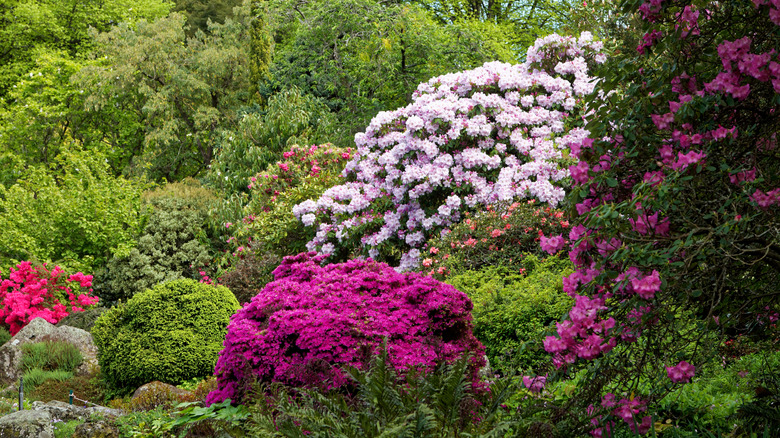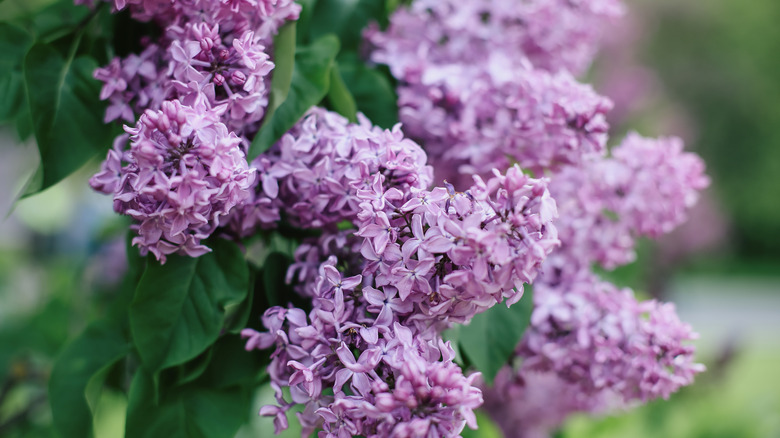The Popular Purple Flowering Shrub You Should Plant For All Its Benefits
If you've been pondering options to add a pop of purple to your garden, chances are, lilac is on your list of candidates — it's a beloved, iconic plant whose name is practically synonymous with the color. A member of the olive family, the common lilac (Syringa vulgaris) is a perennial shrub native to the Balkan Peninsula that loves a colder climate, particularly in USDA Hardiness Zones 3 through 7. With its showy, fragrant clusters of flowers and relative ease of care, lilac might just be the hardy, reliable accent your garden needs; you can even use a row of bushes as a hedge or privacy screen. On top of that, lilac is highly attractive to pollinators, so you can expect your yard to host a cheery retinue of butterflies, hummingbirds, and bee visitors during its springtime blooming season, which can benefit your entire garden.
You'll have plenty of lilac bush sizes and varieties to choose from. Although lilac's classic presentation features light purple flowers, among the hundreds of known cultivars are shades of pink, white, magenta, and variegated hues, in single- and double-flowered forms. Some, such as the white-blooming 'Angel White,' require a shorter period of cold weather to bloom. It's no wonder that there are so many varieties available (possibly as many as 800!), as gardeners have been cultivating lilacs in Europe since the 1500s and in North America since the 1600s. Interestingly, even though it isn't native to the United States, it's still the state flower of New Hampshire.
Acquiring and caring for lilac bushes
Although they have a slight preference for rich, humusy soils, they will suffer in soils that are soggy and drain poorly or are particularly acidic. They are otherwise generally unfussy about soil type and quality. If grown in a site that often has too much standing water, lilacs risk problems such as lilac root rot and cause your shrubs to deliver less than stunning blooms. They're full sun lovers, but will also tolerate some shade — just keep in mind that you'll see the best blooms when they get ample sunlight. They do require plenty of air circulation to reduce instances of diseases such as powdery mildew. Make sure you rake up any fallen leaves infected with powdery mildew and other plant debris before the cold weather hits, as mildew overwinters in fallen foliage.
Lilacs are fairly easy to plant and propagate. For the particularly patient person who happens to know someone with a lilac shrub of their own, ask for a cutting from a root sucker and plant it in a backfilled hole. Within a few years, you'll have a shrub of your own. If you'd prefer to enjoy your lilacs a little quicker, you can source a young bush from a nursery or garden center. The best time to transplant a lilac tree or bush is in spring or fall, with a slight preference for fall. When well cared for, lilacs may have a very long lifespan — possibly over 100 years.

